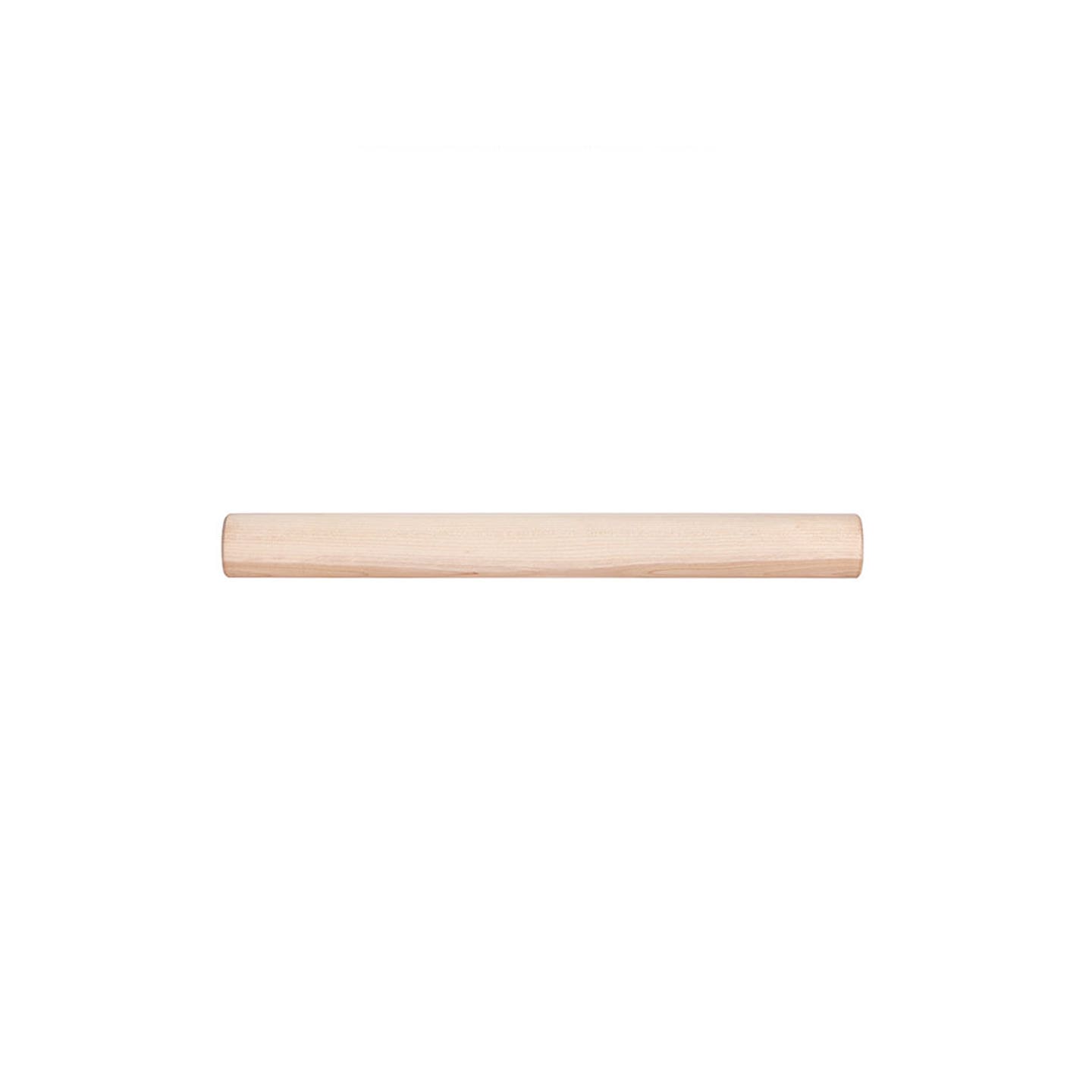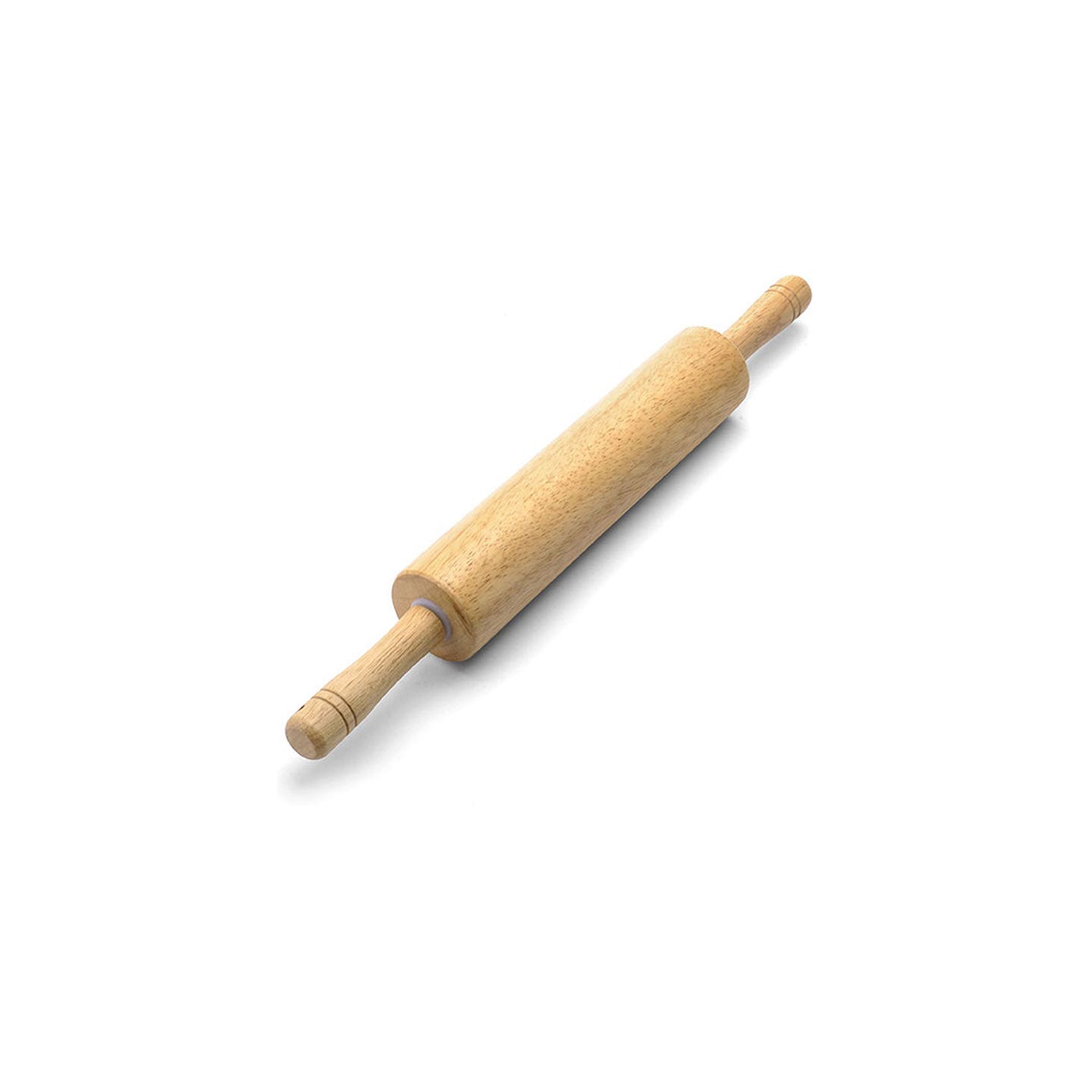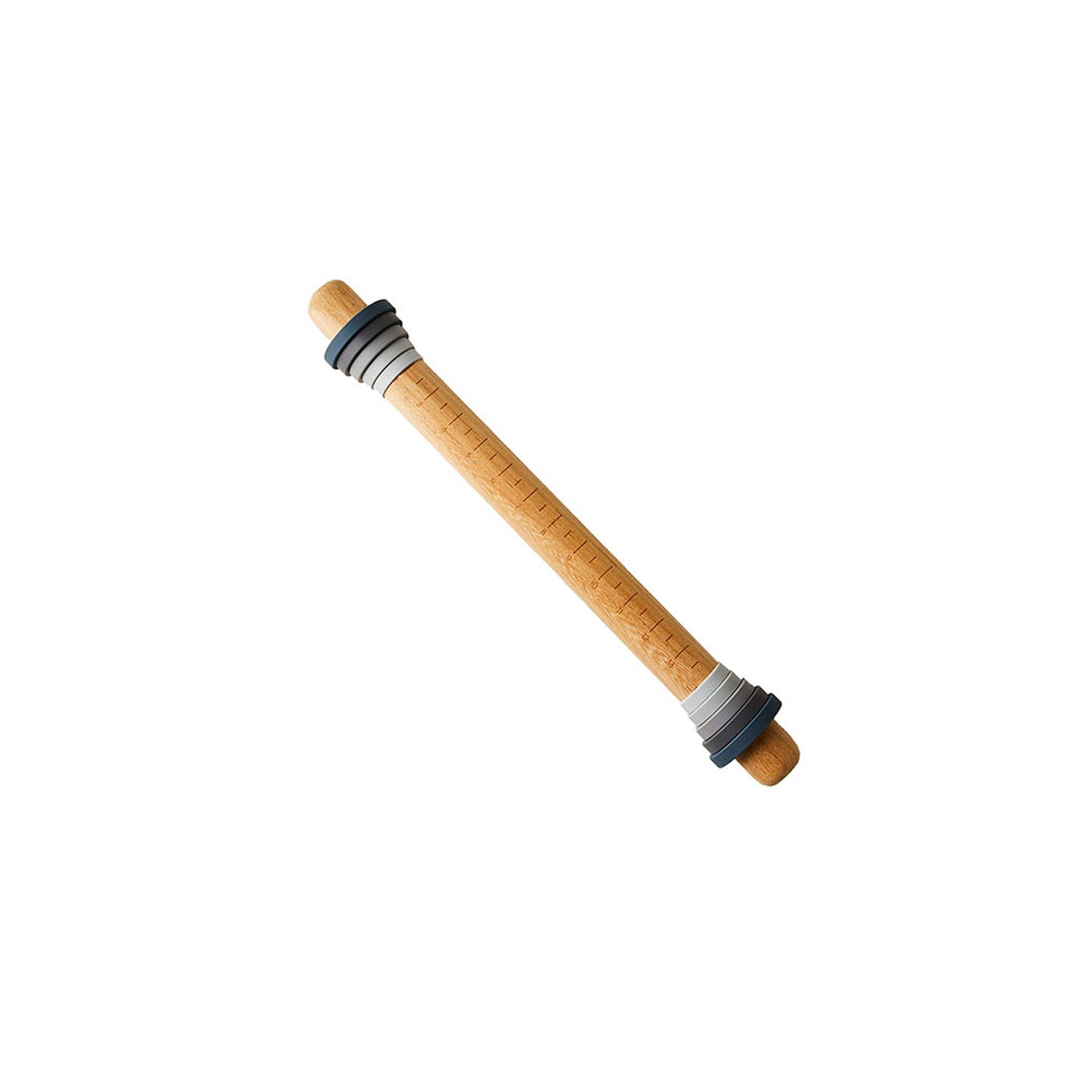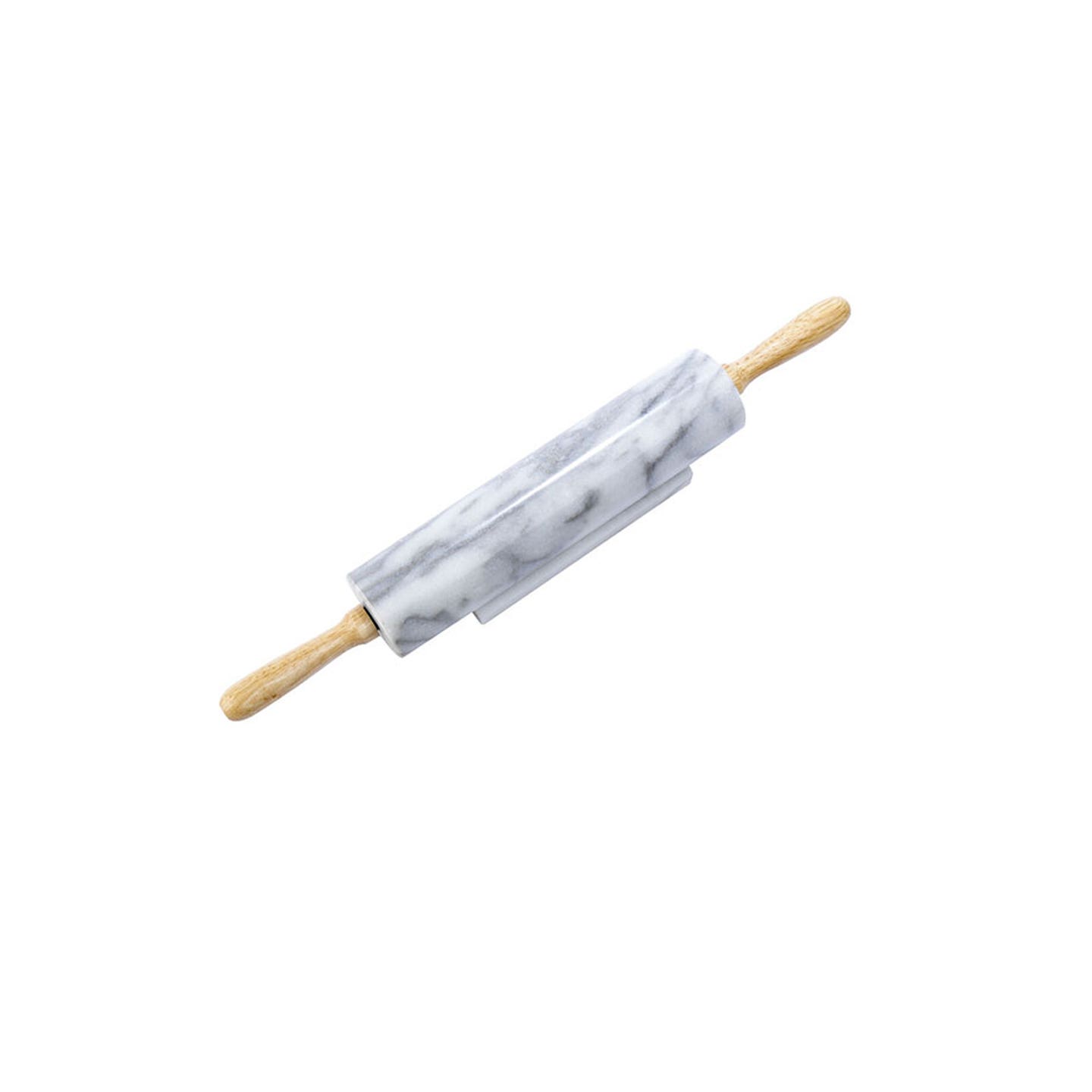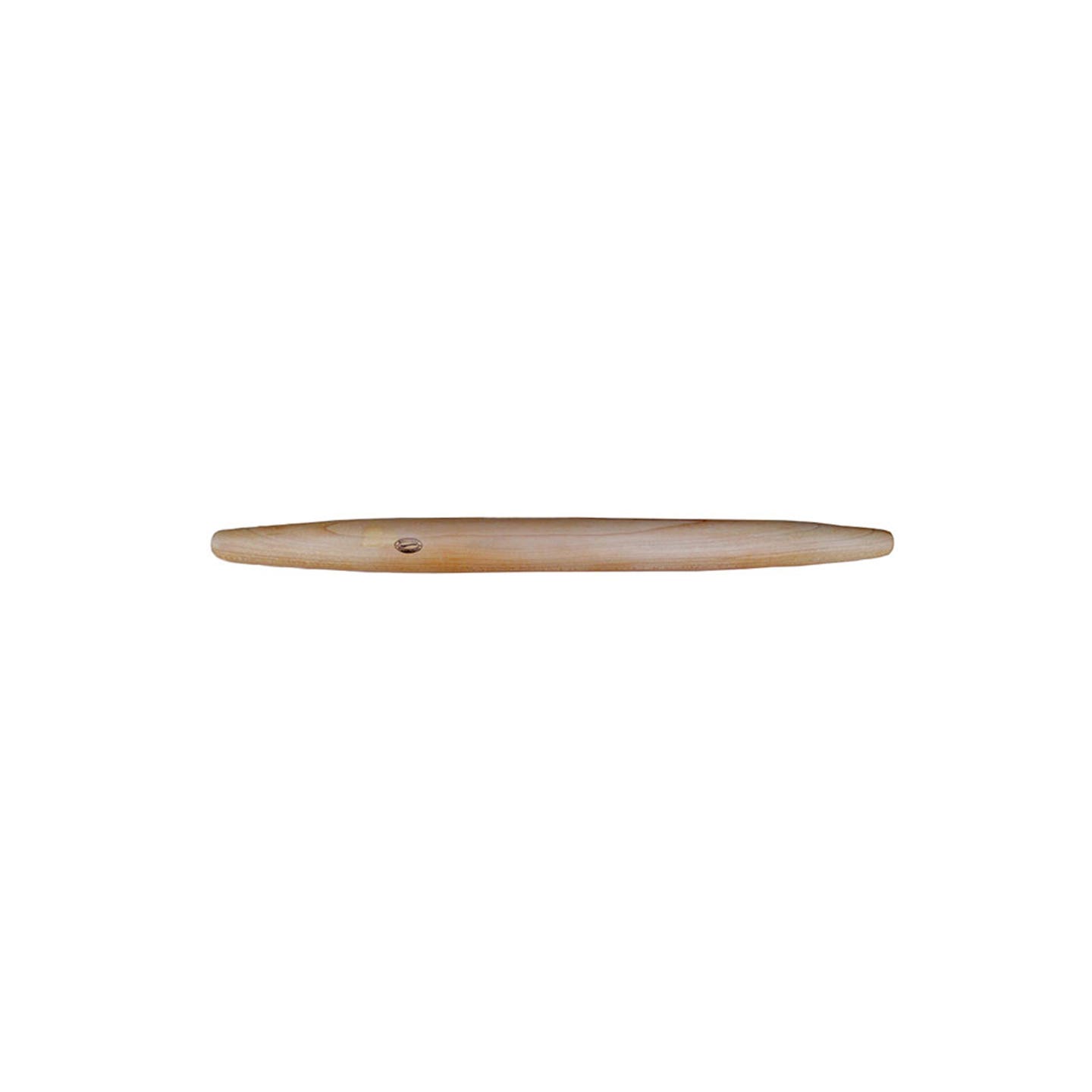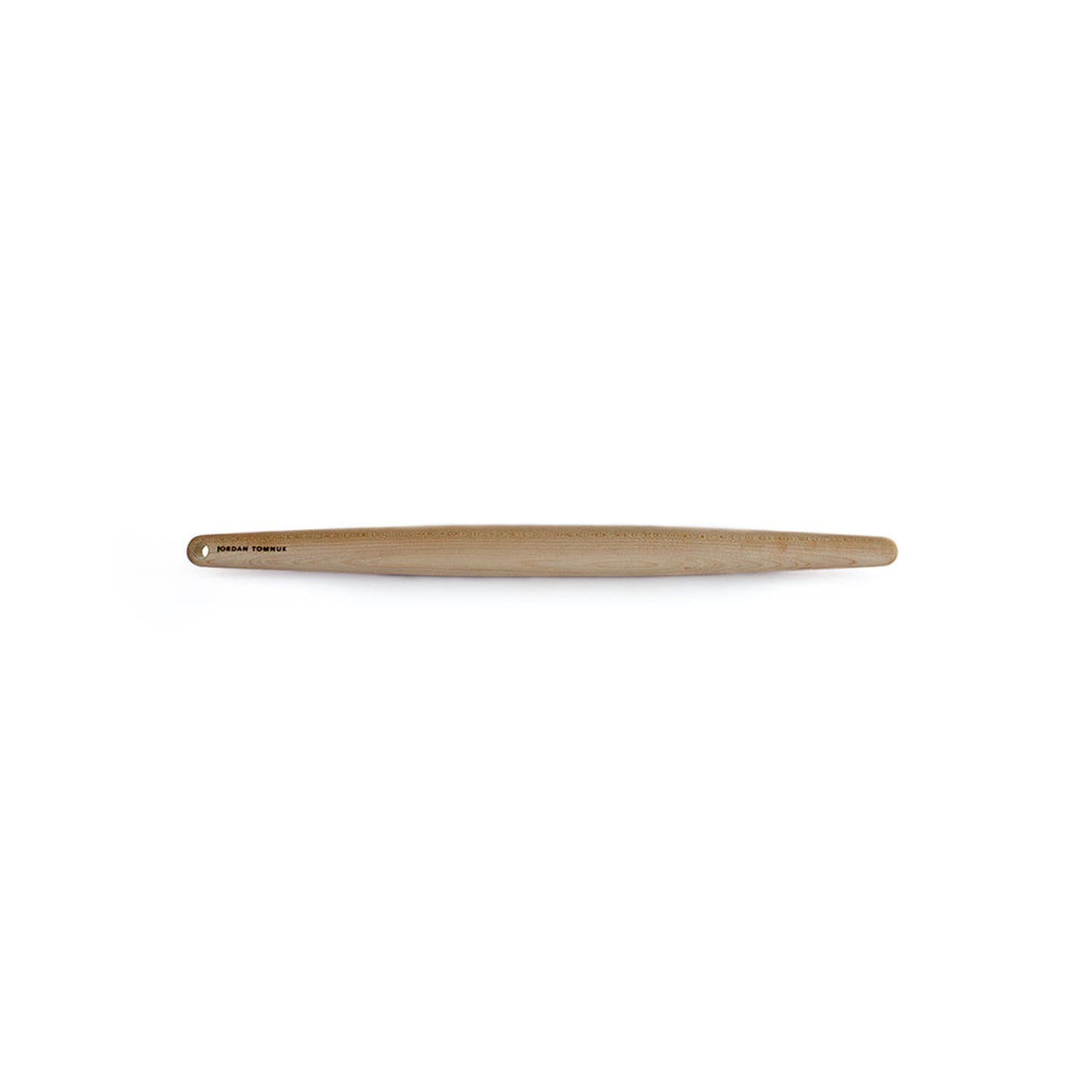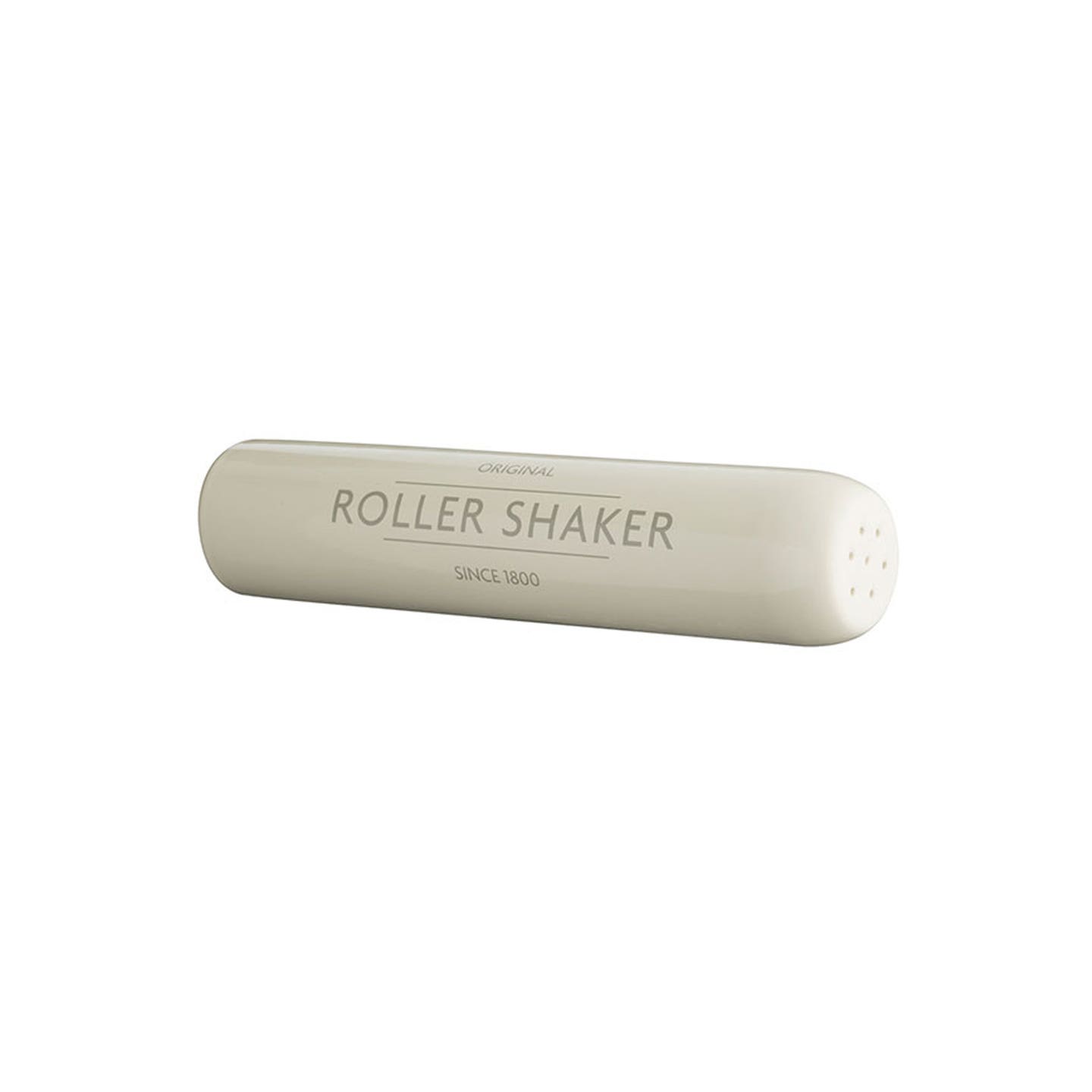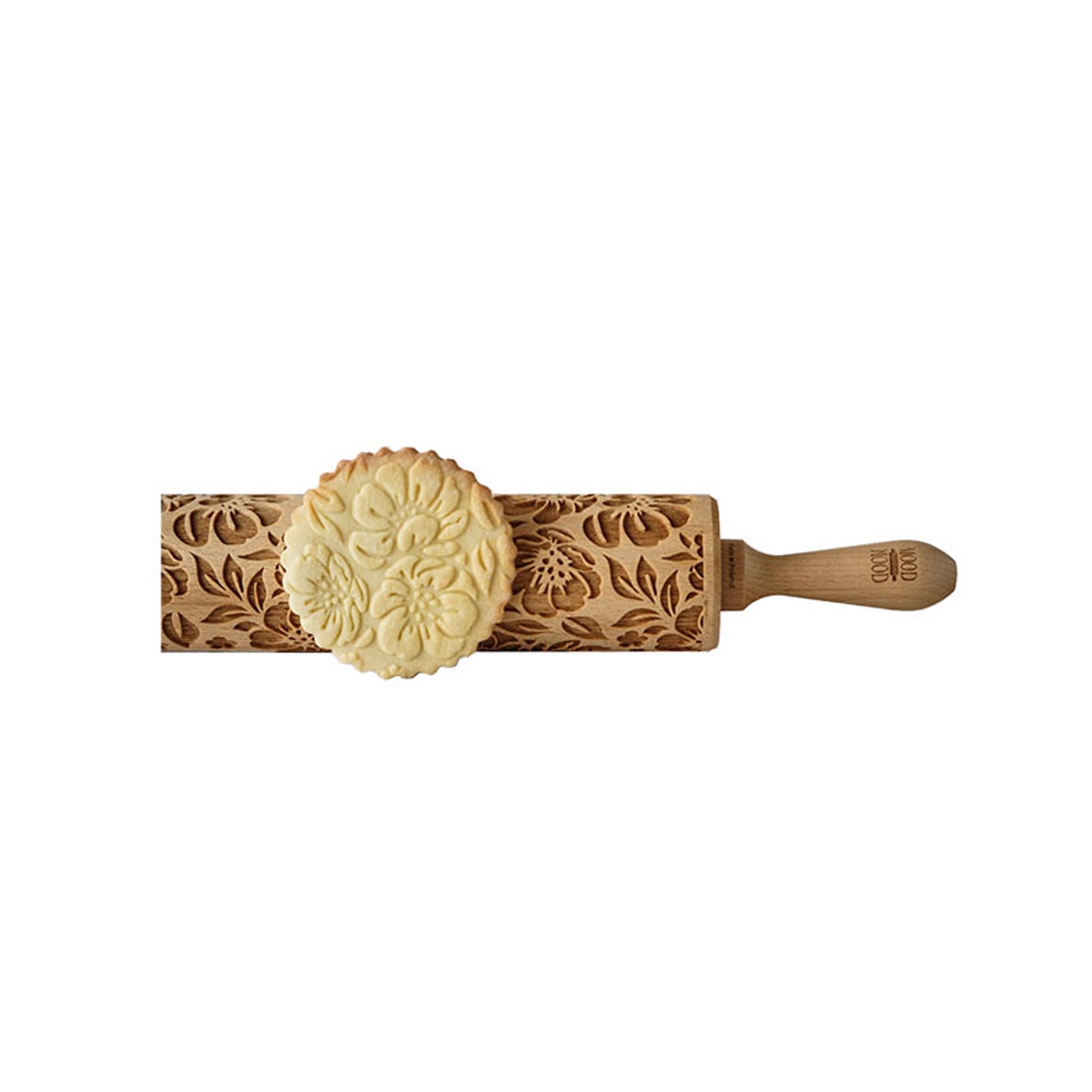From Humble to Highfalutin, These Are the Best Rolling Pins
You can do better than an empty wine bottle.
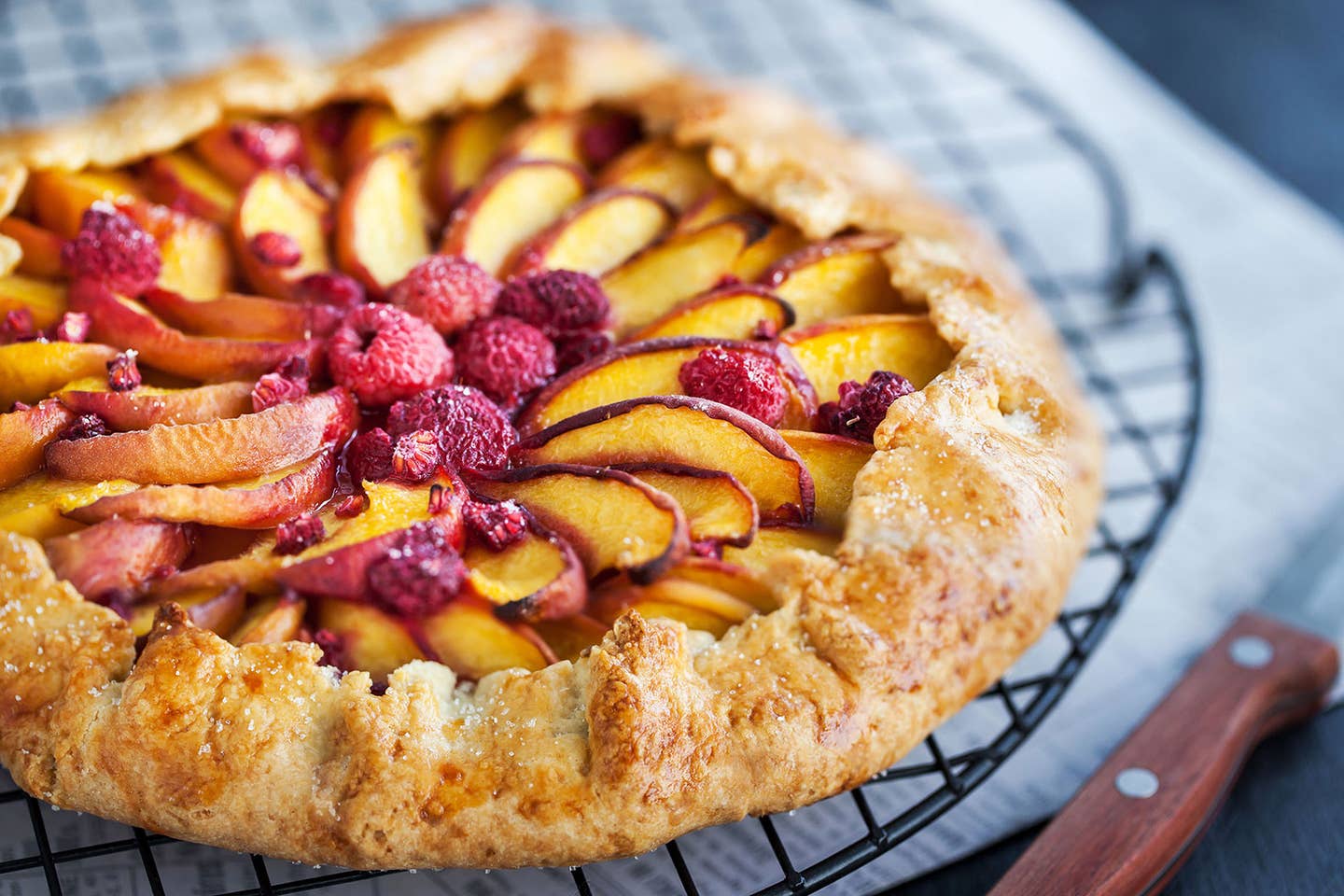
Mention rolling pins to an audience of bakers and you’ve opened the floodgates for passionate discussion. Loyalties run deep, and you can’t overlook the element of nostalgia that circles these very necessary pieces of kitchen equipment. A home baker’s rolling pin of choice might differ from someone who spends their workdays in a commercial kitchen. Many bakers grew up mimicking familial role (roll?) models, utilizing what is dubbed the ‘American-style’ pin, made of wood with handles supporting a cylindrical dowel. Over time, influenced in part by cookbooks, chefs, television, culinary classes, and gourmet bakeware retailers, American rolling pins have been nudged aside to make room for French-style pins with tapered edges and simple dowel-styled pins. Today, bakers can opt for rolling pins fashioned out of various materials, crafted in assorted styles. The tool truly spans cultures, with many cuisines boasting their preferred pin.
So, are pies your jam, or is your kitchen a holiday cookie lab? Are you all about bread and Sunday morning sticky buns, or made-from-scratch pasta and dumplings? Do you dabble in Springerle or Stollen? When choosing the best rolling pin, it’s important to consider the type of baking you love to do. Additionally, remember that regardless of the kind of pin you choose, rolling dough is an acquired skill that comes with practice and experience. Read on for our eight favorites, from traditional to innovative.
- Best Overall: J.K. Adams 19” Plain Maple Dowel Rolling Pin
- Best Value: Farberware Classic Wood Rolling Pin
- Best Adjustable: Five Two Adjustable Rolling Pin
- Best Marble: Sur La Table Marble Rolling Pin With Handles
- Best Tapered: Whetstone Woodenware French Tapered Pin
- Best High-End: Tomnuk French Rolling Pin
- Best For Compact Kitchens: Mason Cash Innovative Kitchen Rolling Pin
- Best Laser Cut: Mood for Wood Engraved Rolling Pin
How We Tested
We took a wooden American-style pin, marble pin, tapered pin, dowel wooden pins, stainless steel pins, and silicone pins to the following: All-butter pie dough, classic sugar cookie dough, gingerbread cookie dough, and cinnamon roll dough. Embossed pins were used on cookie doughs and pie dough. Fondant icing was rolled using a polyurethane pin. Lastly, professional bakers and avid home bakers provided insight.
Features to Keep in Mind
Material
Rolling pins are available in more than a baker's dozen of materials and styles; wood, marble, stainless steel, silicone and polyurethane, with and without handles, slender or substantial, straight, tapered, and embossed. Wood is consistently prized among professionals and home bakers for its durability, simple clean-up, and longevity. Wood can also be easily dusted with flour to prevent sticking, and requires minimal maintenance. Some bakers turn to silicone pins which boast comfortable handles, non-stick surfaces, and are easy to grip, but vary from terribly light to uncomfortably weighty. Stainless steel pins promise to keep dough and hands cold, are incredibly lightweight and easy to clean, but are a mixed bag. Polyurethane pins are more of a one-trick pony and best for rolling fondant icing. Embossed pins have their fans but are generally geared towards a specific task, such as rolling out decorative cookies. Marble pins are distinctly cooler than wood, but are heavy and fragile, requiring thoughtful storage.
Style and Size
The preferred style and size of a pin is subjective, and like many kitchen tools, there is no one-size-fits-all. Selecting a style and a size of pin is determined by what feels most comfortable in your hands and the type of dough you will be rolling. Some bakers swear by handled pins while others prefer a chubby dowel, and still others opt for the up-close-and-personal touch of a French-style pin. Ideally, the length of a French pin should range between 18 and 21 inches, capable of tackling sizable quantities of dough. For smaller tasks, such as delicate tarts, pastries, or dumplings, a 12-inch pin is often preferable. Make sure the length of the pin’s rolling surface is adequate for the task at hand.
“My favorite rolling pin is whichever pin is closest to me when I need it,” says essayist, poet, and pie expert, Kate Lebo, author of Pie School, Pie & Whiskey, and The Book of Difficult Fruit. She tends to use a medium-weight dowel or French-style pin, and says the best one is that which “is the heaviest weight pin that feels comfortable in your hand.”
Straight or Tapered
Many professional and passionate bakers prefer a rolling pin with tapered ends, claiming it allows for more ”pivot”—particularly helpful when working with doughs that are delicate and benefit from thin rolling. In the case of pie shells, tapered pins are popular for yielding rounded edges. Others turn to a straight dowel-style pin made from a single piece of wood, which allows for more precision and control than a handled pin. Both dowel-style straight pins and tapered French pins vary in length and weight.
Handles vs. No Handles
Traditional rolling pins have handles and, for many beginning or casual bakers, are straightforward and easy to maneuver. Handled pins feature a cylindrical barrel that rotates along ball bearings and a steel shaft that moves independently of the handles. Some prefer this style of pin; one that tethers the baker to the handles, while maintaining a distance from the dough. The downside is that these pins can be weighty and tiring on fist-clenched hands. Additionally, their construction encourages flour and dough to congregate in hard-to-reach crevices between the handles and the barrel. Because the pressure exerted on the dough is provided by the weight of the pin and the baker’s arms, many professional bakers save large, handled pins for tasks such as rolling out quantities of resilient, yeast-driven doughs or a countertop’s worth of cookie dough. Longer barrels are heavier, which means they can cover expansive dough territory with fewer rolls, while shorter barrels are lighter in weight and preferable for smaller tasks. A good compromise might be outfitting your kitchen with both a handled pin and a tapered french pin or dowel-style pin so you can tackle a variety of bakes.
Our Top Picks
Best Overall: J.K. Adams 19-inch Maple Dowel Rolling Pin
Best Overall
No bells and whistles here. This simple, Vermont-made dowel fashioned out of maple combines just enough heft to tackle large doughs without being unwieldy. With a light dusting of flour, the pin glides easily over all of the doughs we tested. At 19 inches in length and 2 inches in diameter, it boasts a happy medium of length and weight—long enough to cruise through a wide swath of cookie dough, yet comfortable enough to use repeatedly on multiple circles of pie dough. You can easily clean it by using a plastic bench scraper to remove dough stragglers, followed by a barely damp towel. (Let it dry thoroughly.) Note: For bakers accustomed to using handled pins, there is a slight learning curve.
Best Value: Farberware Classic Wood Rolling Pin
Best Value
Made of moisture resistant hardwood, this old-school, handled rolling pin is fine for casual bakers who enjoy rolling out cookies, the occasional pie shell, or simple yeast doughs. Lighter in weight than some of our other picks, its surface area makes it more suitable for smaller quantities of dough. Its size means you can find a spot to store it, even in crowded kitchens, and it’s well-made for the price. If cared for properly (hand washed and thoroughly dried), it will provide plenty of rolling mileage.
Best Adjustable: Five Two Adjustable Rolling Pin
Best Adjustable
This French-style pin sports silicone rings (sort of like training wheels on a bicycle) to help guide you as you roll to your preferred thickness. Laser-etched measurements in both Imperial and Metric are clear as a bell on the water-resistant teak pin. This is a great gift for an enthusiastic, new baker or those who appreciate a little guidance when rolling to a recipe’s specific thickness. The adjustable rings easily slide on and off, and won’t get lost if stored in the included muslin bag.
Best Marble: Sur La Table Marble Rolling Pin With Handles
Best Marble
A marble rolling pin is a commitment, requiring care and adequate counter storage space. And we won’t mince words: this one is heavy, weighing in at 7 1/2 pounds with a barrel measuring 10 inches. However, it’s excellent for rolling out butter-rich doughs and pie shells, and it strikes the right balance of being weighty enough to glide easily without being cumbersome. The pin can be displayed in its handy cradle on your countertop, but make sure to chill both in the fridge before using.
Best Tapered: Whetstone Woodenware French Tapered Pin
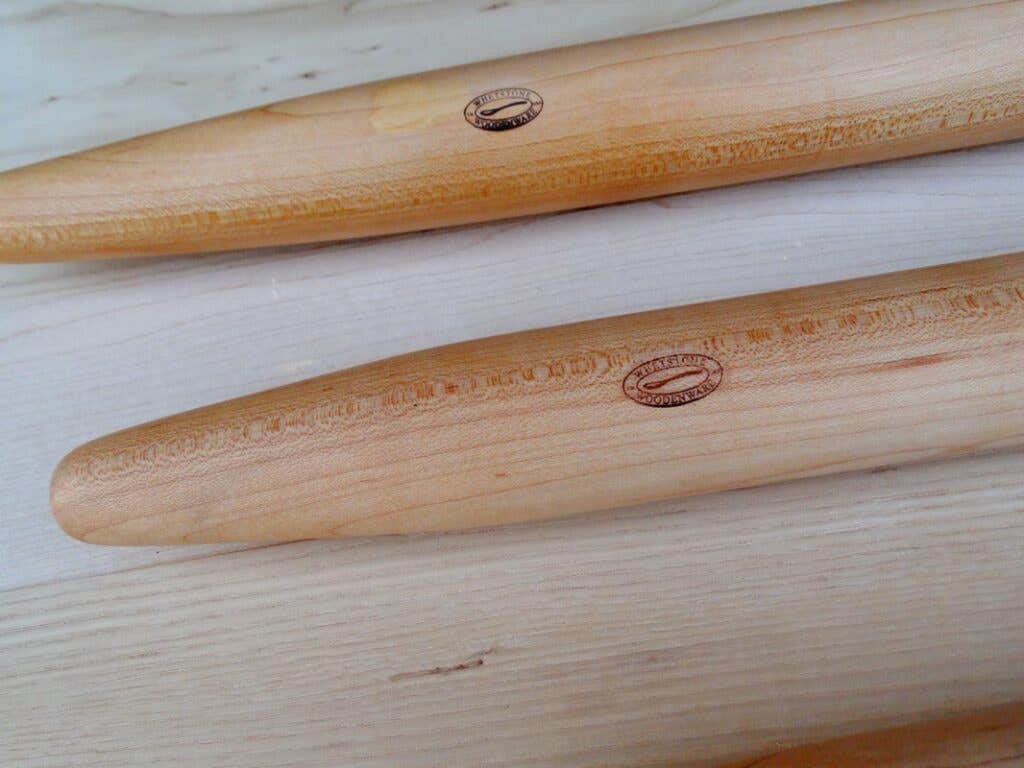
Best Tapered
Beautifully crafted in Silverlake, Indiana from locally sourced and sustainable materials, the Whetstone’s 23-inch maple pin is a dream. Its silky, smooth finish sails across doughs and doesn't require multiple applications of flour. It is extremely comfortable to use and well balanced, and even after a long session of holiday rolling, my hands and wrists didn’t complain. This is the pin that I would recommend to friends who might be hesitant to switch from a handled pin to a tapered pin.
Best High-End: Tomnuk French Rolling Pin
Best High-End
Polished with bee’s wax and mineral oil, the finish of this French rolling pin boasts a slightly more porous surface than most, meaning it holds on to flour. I’m particularly fond of the way its tapered edges maneuver around circles of pie dough, and while it does provide plenty of heft, it’s still comfortable to use for extended periods of time. Measuring nearly 21 inches in length, this pin glides easily over large rolling tasks while its slender barrel allows you to really “feel” the dough. The pin develops a beautiful patina over time and cleans up like a dream. Bonus points for its brass hanging hole.
Best For Compact Kitchens: Mason Cash Innovative Kitchen Roller Shaker
Best For Compact Kitchens
This quirky, multi-tasking little pin comes from the folks at Mason Cash, known for their iconic ceramic mixing bowls. Measuring a mere 3.15 inches, this hand-wash only ceramic pin would make a thoughtful gift for Anglophile-smitten bakers and lovers of vintage bakeware. A shaker built into the bottom of the barrel allows for a few tablespoons of flour, which can be sprinkled over dough or a small work surface. Limited by its size, but certainly capable, this conversation starter is worthy of counter space and easier to store than its longer counterparts.
Best Laser-Cut: Mood for Wood Engraved Rolling Pin
Best Laser-Cut
Mood For Wood is a Warsaw-based retailer specializing in laser-cut wooden rolling pins. The pins are made of Polish beechwood and measure 17 inches in length. Treated with food-safe oil to discourage dough from sticking, their whimsical designs are hard to resist. I own several of their pins and love them as a tool for decorating cookies without turning to icing. Your dough must be chilled before using the pin, and once the cookies are rolled/embossed, they should be chilled again before baking to maintain their designs. Clean up requires a clean, dry toothbrush and a little patience. The company offers numerous patterns as well as custom designs. Not only are the Mood For Wood folks crafty, I’ve always been delighted with their customer service.
4 Pro Tips for Rolling Out Dough
- Chilled dough that has had time to rest, chill, hydrate, and allow the gluten to relax is more agreeable to rolling. Proper temperature is key: If the dough is too cold, it resists the rolling pin and tends to crack; too soft and it sticks to the pin, the counter, and your fingers. Be patient and don’t be afraid to return the dough to the fridge for a bit if it is getting too soft.
- Rolling out pie dough on a sheet of parchment paper makes it easy to maneuver without sticking, curbing the tendency to add excess flour. Overworking the dough causes it to toughen and shrink. Pie dough should be rotated periodically as you roll, which helps maintain an even thickness and a circular shape. Take care not to roll the edges too thin; easing up on the pressure as you near the edges helps. Let your bench scraper join the party; it’s ideal for getting beneath the dough, lifting it so you can determine if you need an extra sprinkle of flour.
- Cookie doughs benefit from being sandwiched between two equal sized sheets of parchment paper and rolled out, eliminating the need for much, if any, additional flour. Forcing dough by rolling back and forth repeatedly, toughens it, encourages shrinking, and tires your arms. Always let the chilled dough rest on the counter until pliable, but not too long. Your finger should only leave a slight imprint, not sink into it.
- One thing many bakers overlook is counter height. The height of your work surface matters, as typical countertops are generally too high for rolling out dough. Unless you are very tall, table height (30 to 32 inches) or waist height provides good leverage; remember, the pin is an extension of your arms. Working on a surface that is slightly lower provides better leverage, allowing you to use the proper amount of pressure.
Ask the Experts
Q: When should I flour my rolling pin?
Lightly flour your pin before you start rolling. Reflour your rolling pin and surface throughout the process, taking care not to add too much—adding too much flour to a dough in this step results in drier and tougher baked goods. Often, the temperature of the dough is the sticking culprit; in that case, refrigerate the dough briefly.
Q: How do I prevent dough from sticking to a rolling pin?
Proper temperature is key; make sure the dough is chilled and the rolling pin is lightly floured. It is a good idea to turn the dough periodically to keep the thickness even and check to see if the dough is sticking. If so, lightly dust your pin and your work surface with flour.
Q: What’s the best way to maintain a new rolling pin’s quality?
Rolling pins should always be cleaned and dried before storing. Wooden pins do not have to be oiled/seasoned, but should you choose to do so, always use food grade mineral oil, which is safe and doesn’t turn rancid. Oiling a wood pin protects wood from moisture and bacteria, keeps it conditioned, prevents cracks from forming, and helps keep dough from sticking.
Do not use soap when cleaning a wooden pin; this will strip the wood of its natural oils and leave behind unwanted fragrance. Again, a plastic bench scraper should easily scrape away dough remnants, and for particularly stubborn bits, add another dusting of flour then try again. A damp kitchen towel should complete the clean-up, and a dry one will remove any excess moisture. Never allow a wooden pin to soak in water and never place it in a dishwasher. Over time, a wooden rolling pin will develop a rich patina from the fats in the pastry dough.
Pins made of materials other than wood should be scraped clean using a plastic bench scraper, wiped down with a damp cloth, and then thoroughly dried with a towel. Embossed pins can be cleaned using a dry, clean toothbrush.
Keep Reading
Continue to Next Story
